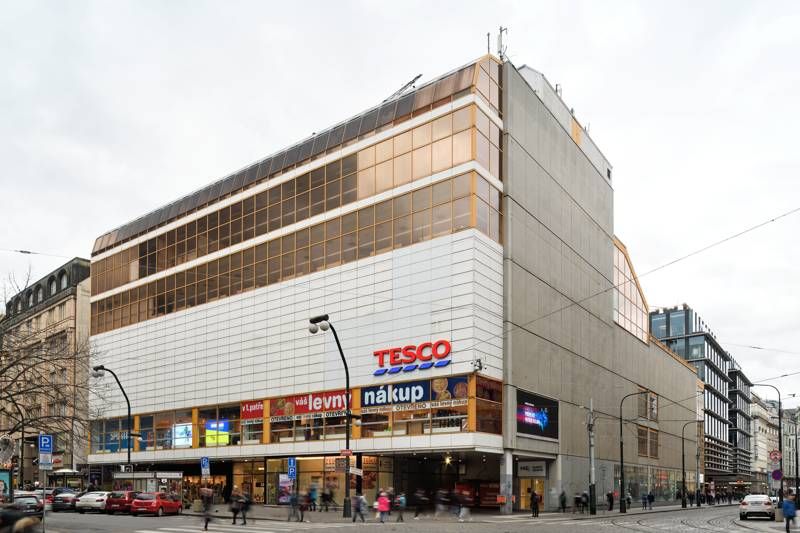Czech painter Alfons Mucha was really lucky. When he moved to Paris in the late 1880s, in only a short time a new ornate organic style began to develop here, ending historicism and laying the groundwork for the rise of modernism.
Taking inspiration from the plant kingdom, Art Nouveau unites architecture with interior fixtures, décor, everyday necessities and fine art. Mucha who seized the opportunity quickly became one of his most famous representatives thanks to the original poster.
However, he did not penetrate architecture, if we do not count the interior design of the jeweler Georges Fouquet, today exhibited at the Musée Carnavalet. Since then, there have been other construction musketeers led by Hector Guimard. Art Nouveau architecture began to revive Paris from 1895. Its development was greatly accelerated by the World’s Fair there in 1900.
Spanish Art Nouveau made famous by Antoni Gaudí
Antoni Gaudí developed his own naturalistic Art Nouveau form. The building is very original from the start.
It was intensively connected with Art Nouveau, and from it the new style began to spread like fireworks to other cities and countries. Art Nouveau in France has recently experienced a certain revival, thanks to a series of reconstructions of important monuments. Thanks to them, people can now admire her true beauty.
A metro station in Paris
Photo: Shutterstock.com
The Porte Dauphine metro station is the only one where the original structure has been completely preserved in its original location.
Paris in crystal, this is a canvas on Montmartre, the Eiffel Tower, but also an art nouveau entrance to a metro station with an enameled Metropolitain sign. It was designed by architect Hector Guimard as a lightweight modular design of cast iron, iron and glass for the World’s Fair in 1900.
He won the contract thanks to the enthusiastically accepted art nouveau house Castel Béranger. The fan-shaped shelter at the entrance of the subway resembles a dragonfly. Over the following years, the city installed 167 of them in various variants, about half of which have been retained.
Lyon Station in Paris
Photo: Paris Tourism Office, Jacques Lebar, News List
The Lyon station tower resembles Elizabeth in London with the bells of Big Ben.
The World’s Fair in 1900 was supposed to draw large crowds to Paris, so transport infrastructure had to be adapted. It also happened at the Gare de Lyon station, which received a new building from Marius Tudoire. The architect also designed train stations in Bordeaux and Toulouse for the company operating lines to Lyon and the Mediterranean Sea.
The building with an eclectic style that combines art nouveau and historicism is dominated by a clock tower with a diameter of more than six meters. The famous train station restaurant Le Train Bleu has been the setting in several films, such as Brutal Nikita or Mr. Bean’s Holidays.
Villa Majorelle in Nancy
Photo: Pixabay, Report List
Villa Majorelle is in exemplary condition thanks to a major renovation completed three years ago.
Nancy became the second major center of French Art Nouveau, next to Paris. The local artist group is dubbed the School of Nancy. The hallmark of Art Nouveau architecture there is designer and furniture decorator Louis Majorello’s villa by Henri Sauvage from 1902. Not only did industrialists live here, but the villa was also used for his work and presentations. It became a display case for Majorelle’s furniture and works by a number of artists.
La Samaritaine department store in Paris
Photo: Unsplash, News List
Part of the La Samaritaine department store has not only an Art Nouveau interior, but also a facade.
La Samaritaine is a multi-purpose complex with several luxurious neighboring buildings from different periods, including art deco and contemporary architecture by Japanese studio SANAA. An art nouveau style shopping gallery with an enclosed courtyard, called Magasin 2, was created by architect Frantz Jourdain.
The sturdy frame, made of steel and glass that was fashionable at the time, softened the look of a large number of decorations. At the beginning of this century, the complex was closed for a long time, but since last year it has been reopened to the public after seven years of repairs.
Butcher Saint-Louis in Autun
Photo: Shutterstock.com
The Saint-Louis Massacre, adorned with gold bulls and blue irises, still has its original use today.
Typical for the Art Nouveau period, a rarity preserved to this day. The shop’s ornate faade features a cast-iron structure in black, gold and blue color combinations. It is furnished with marble tiles and on the roof with an openwork zinc ornament called a lambrequin, which imitates decorative curtains or drapes.
Former Félix Potin department store in Paris
Photo: Shutterstock.com
The owner of the house with the tower, Félix Potin, founded the first French grocery store chain.
The successful and innovative grocer Félix Potin owns a glorious art nouveau-style house with a tower built on the corner of rue de Rennes and rue Blaise-Desgoffe. The building was the work of architect Paul Auscher, and the author tried out a new technique of mixing concrete and light stone on top.
Thanks to a cylindrical tower with a crown at the end and the owner’s gilded name, on which artificial trees seem to support the balcony, the house has earned the nickname “champagne cork”.
Maison Coilliot in Lille
Photo: Shutterstock.com
Coilliot’s house in Lille has an asymmetrical facade set in the Golden Ratio.
Architect Hector Guimard not only made his mark in Paris, but he also made his mark in Lille, for example. Louis Coilliot, a ceramics dealer there, will begin production of enameled surfaces. He asked the architect to design a house for him, which would also serve as an advertising poster for the items for sale.
Guimard used stone, wrought iron, brick and ceramics for the facade. He designed the enameled board in the same style as the Paris metro. The house was completed in 1900.
Lavirott’s house in Paris
Photo: Shutterstock.com
Similar to the door, Lavirott’s house has a facade that is decorated all the way to the roof.
The one designed by architect Jules Lavirott for Alexandre Bigot’s ceramics has perhaps the richest plant decoration of all the Art Nouveau homes in Paris. Here too, the highly structured facade becomes an advertising banner for the product, this time ceramic tiles. Several sculptors participated in the decoration, and in 1901 the house won the competition for the most beautiful facade in Paris.
Buvette Cachat spa pavilion in vian-les-Bains
Photo: Shutterstock.com
Buvette Cachat is currently undergoing a phased restoration.
The vian Alpine Spa on the southern shore of Lake Geneva gives its name to the famous mineral water, which is also used to treat kidney and bladder problems. This spring was located in Gabriel Cachat’s garden in the 18th century, and today it is called the Cachat spring after his name.
The mineral water bottling factory, originally owned by the Cachat family, has a glass-covered pavilion with a refreshment bar or buffet built not far from the springs. Having been here since 1903, the author is Jean-Albert Hébrard.
Galeries Lafayette Haussmann department store in Paris
Photo: Shutterstock.com
The Galeries Lafayette Haussmann department store is one of the largest in Europe.
The flagship department store of the Galeries Lafayette chain was created at the turn of the 19th and 20th centuries by joining several neighboring buildings. In 1912, the centerpiece became a gigantic Art Nouveau hall with a row of galleries reminiscent of a theater gallery. It is surrounded by an Art Nouveau dome with a peak at 43 meters above the ground, supported by ten concrete pillars.
Nancy’s school artists, such as the aforementioned Louis Majorelle or stained glass artist Jacques Gruber, took care of the decorations.
Nancy . School Museum Aquarium Pavilion
Photo: Shutterstock.com
The fan-shaped roof of the garden aquarium at Nancy bears witness to Japanese inspiration.
The former home of Eugène Corbin, the great patron of the Nancy School, has hosted a museum dedicated to this group of Art Nouveau artists for decades. Among the most remarkable exhibits is the small aquarium building in the garden, attributed to architect Lucien Weissenburger. Stained glass windows and doors made by Jacques Gruber.
Lutetia Hotels in Paris
Photo: Shutterstock.com
The luxury hotel Lutetia was renovated in 2014-2018.
Hotel Lutetia, built in 1910 by architects Louis-Hippolyte Boileau and Henri Tauzin, looks like a huge art nouveau cake. Similar to the Prague Town House, it also has rounded corners, ending in a semicircular gable roof. Here the shield is plain and decorated with the hotel name. It got its name from the Roman city on the site of Paris today. The garnish with grapes, which many Romans cultivated here, also refers to it.

“Tv nerd. Passionate food specialist. Travel practitioner. Web guru. Hardcore zombieaholic. Unapologetic music fanatic.”







